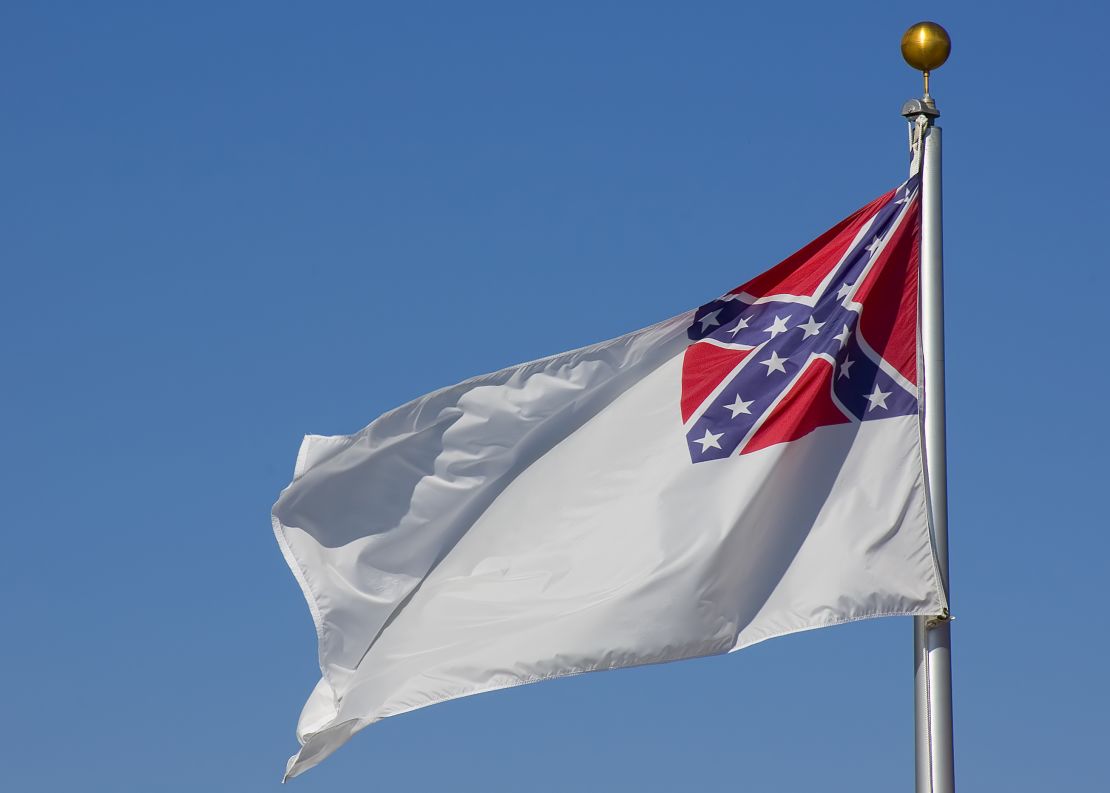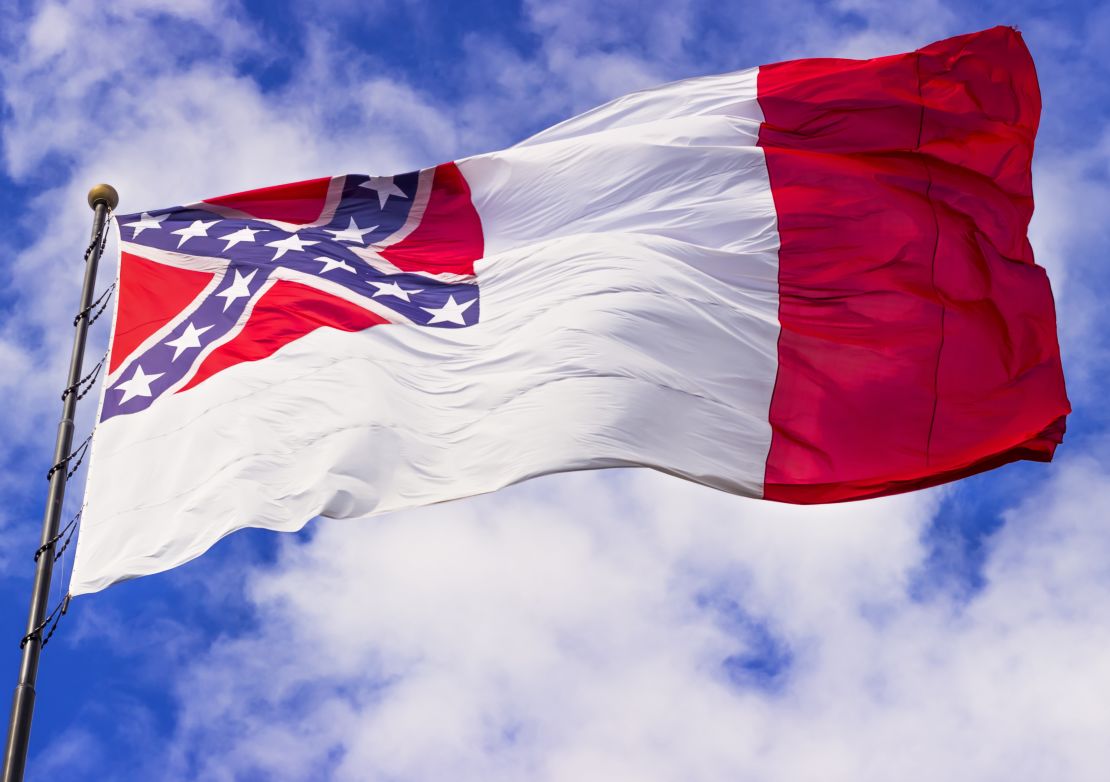Story highlights
It's not the original Confederate flag
It came to prominence during the civil rights movement in the 20th century
The racist massacre in a South Carolina church has tipped the balance in a decades-old tug of war over the meaning of the Confederate battle flag.
Its champions have argued it’s a symbol of Southern culture, the historic flag of the South.
Critics say it’s a racist symbol that represents a war to uphold slavery and, later, a battle to oppose civil rights advances.
We take a look at the flags of the Confederacy to sort out the facts.
It’s not the original Confederate flag
The Confederate states went through three official flags during the four-year Civil War, but none of them was the battle flag that’s at the center of the current controversy.
The first was the “Stars and Bars,” approved in 1861.
Like its Union sibling, it had a dark blue field in the upper left corner – or the canton – and only three stripes, two red and one white. It had seven stars to represent the breakaway states: South Carolina, Mississippi, Florida, Alabama, Georgia, Louisiana and Texas. And the white stars formed a circle, much like the original Betsy Ross American flag.

It’s not even the second, or the third
The original Confederate flag’s similarity to the Union flag quickly confused soldiers, who often couldn’t tell the difference between the two on smoke-filled battlefields.
Confederate Gen. P.G.T. Beauregard wanted something that looked distinctly different.
So politician William Porcher Miles came up with the design we know today – the battle flag: a blue St. Andrew’s Cross with white stars on a red field.
The Confederacy took the battle flag design and put it on the canton of its next flag, a white one. They called it the “Stainless Banner.”

There was a problem.
When the wind didn’t blow, only the white was clearly visible, making it look like a white flag of surrender.
So, in the third incarnation of the Confederate flag, a red vertical stripe was added on the far end. This flag was called the “Blood-Stained Banner.”
Shortly after that the South surrendered.

It’s the battle flag of Robert E. Lee’s army unit
While it wasn’t the Confederate states’ official flag, the battle flag was flown by several Confederate Army units. The most notable among them was Gen. Robert E. Lee’s Army of Northern Virginia.
And even Lee distanced himself from divisive symbols of a Civil War that his side lost.
“I think it wiser moreover not to keep open the sores of war,” he wrote in a letter, declining an invitation by the Gettysburg Battlefield Memorial Association.
There were no flags flown at his funeral, Confederate or otherwise.
South Carolina lawmakers weigh in on Confederate flag bill
Slavery was a big part of why the South wanted to secede
In their declarations of secession from the Union, some Southern states expressly mentioned slavery as a reason for their departure.
“… an increasing hostility on the part of the non-slaveholding States to the institution of slavery, has led to a disregard of their obligations …” South Carolina wrote in its declaration.
The state of Mississippi aligned itself with slavery right off the top of its declaration:
“Our position is thoroughly identified with the institution of slavery – the greatest material interest of the world.”
Georgia named slavery in the second sentence of its declaration. The sad list goes on.
“To put it more simply, South Carolina and the rest of the South only seceded to preserve the violent domination and enslavement of black people, and the Confederate flag only exists because of that secession,” said CNN political commentator Sally Kohn.
“To call the flag ‘heritage’ is to gloss over the ugly reality of history.”
Opinion: Taking down Confederate flag is not enough
The rebel flag’s resurgence came long after the Civil War
After the Civil War ended, the battle flag turned up here and there only occasionally – at events to commemorate fallen soldiers.
So, when did the flag explode into prominence? It was during the struggle for civil rights for black Americans, in the middle of the 20th century.
The first burst may have been in 1948. South Carolina politician Strom Thurmond ran for president under the newly founded States Rights Democratic Party, also known as the Dixiecrats. The party’s purpose was clear: “We stand for the segregation of the races,” said Article 4 of its platform.
Why the Confederate flag still flies
At campaign stops, fans greeted Thurmond with American flags, state flags – and Confederate battle flags.
But desegregation progressed.
As it passed milestones like the Supreme Court ruling on Brown vs. Board of Education, which gave black American children access to all schools, the Confederate battle flag popped up more and more.

It can be removed from the South Carolina Capitol without a supermajority
In 1961, to honor the 100th anniversary of the beginning of the Civil War, South Carolina lawmakers raised the Confederate battle flag over the State House.
In 2000, it was moved to a flagpole next to a soldiers’ monument, and its position there was protected by the 2000 Heritage Act.
The act said that any changes to the act will require a “two-thirds vote of each house of the General Assembly.”
But there’s another thing the state Legislature can do. It can vote to repeal the law altogether – and it only needs a simple majority for that.
“The Heritage Act requires a two-thirds vote to change any of these Confederate and Civil War statues and monuments around the state,” U.S. Rep. James Clyburn of South Carolina told CNN.
“The Heritage Act must be rescinded, and the only thing required to rescind that is a simple majority vote. And once that Act is rescinded, two-thirds would not be needed to change the locations of the flag or any other Civil War or Confederate memorial.”






